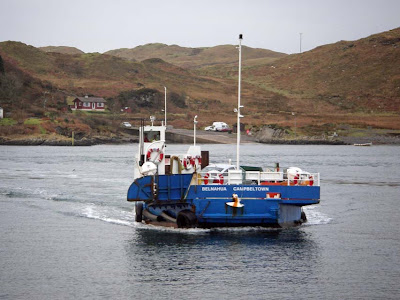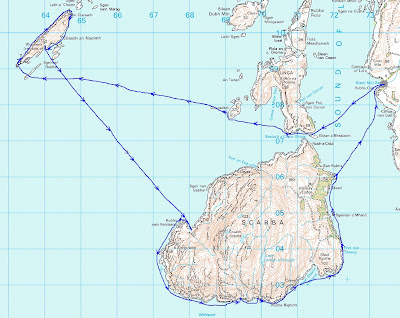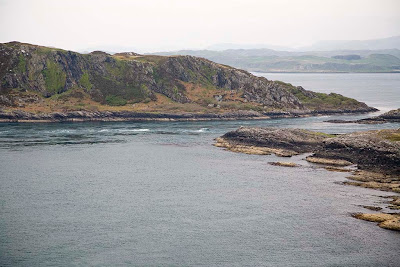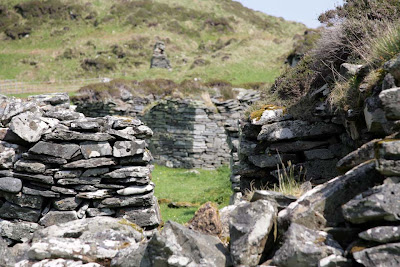
MV Belnahua
The tidal Cuan Sound (between the isles of Seil and Luing in the Firth of Lorn) runs at up to 15km/hr. The little ferry, the MV Belnahua, makes the short crossing several times a day. It is very instructive watching her ferry glide. The captain only ever crosses the main flow at right angles to save fuel. He then uses the slacker water and eddies at the sides to make his way back to the jetty.

MV Grey Dog
I have not been able to get out paddling recently so this photo is from last May. When we arrived we found that the Belnahua was off on its holidays, leaving the tiny MV Grey Dog in its place.

It was just big enough for David's car and my trailer and it lurched alarmingly as we drove on. There is no turntable so you need to reverse off. David did not fancy this so I had a go. I did pretty well until the last moment when I clipped the front bumper on the ramp sides.

It did not spoil our day, it allowed us to have a fantastic day trip from Glasgow out through the Grey Dogs tidal channel, round the Garvellachs, back to Scarba then home via the notorious Corryvreckan. We had tidal assistance all the way!
There is one point to note about the Cuan ferry. Although Calmac list the timetable, it is actually operated by Argyll and Bute council. Calmac state "
We cannot be held responsible for any errors or omissions".
More about that another day....





























